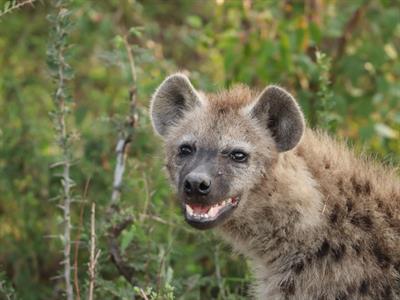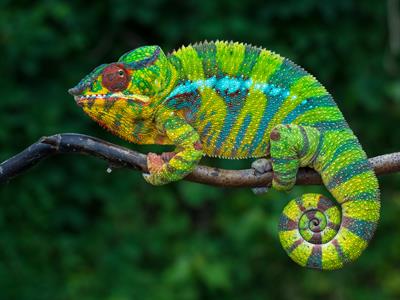PDF chapter test TRY NOW
Though to distinguish beasts of prey
A novice might nonplus,
The Crocodile you always may
Tell from the Hyena thus:
Hyenas come with merry smiles;
But if they weep they’re Crocodiles.
The true Chameleon is small,
A lizard sort of thing;
He hasn’t any ears at all,
And not a single wing.
If there is nothing on the tree,
’Tis the chameleon you see.
Explanation:
The poet dedicates this entire poem only to people who do not know to identify the wild animals. The poem can serve as a warning as they do not have to wait until the animal preys on them. A new person who has no experience at large in viewing or distinguishing wild animals from one another may be surprised or confused initially, as all wild animals are predators. In order to easily distinguish between a crocodile and a hyena, she gives a clue. Only novices have confusion in differentiating between the two animals. When the hyena attacks the prey keeping a smile on its face, the crocodile attacks as it weeps, it is a common belief that crocodiles cry when they attack the prey, either as a trap to lure or as an emotion for their violent act. 'Crocodile Tears' is even a saying to represent a fake person. Hyenas, on the other hand, are joyous about getting prey and relish the kill with a smile.

Hyena smiling
Although the poem begins with dangerous beasts like the lion and tiger, the poet ends with an introduction to a chameleon. She says that a true chameleon looks very small in size and resembles the appearance of a lizard. Like snakes, chameleons do not have a middle ear or ear drums. However, they can detect sound frequencies of 200 - 600 HZ. Contrary to their hearing capacity, they can see both visible and ultraviolet light. They do not have wings, as they are reptiles. The poet also says how it can be slightly dangerous as it has the capacity to camouflage its presence and become one with the surface that they are in. She sarcastically ends the poem by saying that if there isn't anything on the tree, then there must be a chameleon that has camouflaged its colour to the bark's colour.

Chameleon
Words with difficult meanings:
| S.no | Words | Meaning |
1 | Prey | An animal or person that is killed by another |
2 | Novice | A person who is new without any experience |
3 | Nonplus | Surprised and confused |
4 | Merry | Happy and joyous |
5 | Weep | Cry uncontrollably |
6 | Camouflage | The way an animal merges with the surrounding |
Reference:
National Council of Educational Research and Training (2006). Beehive. How to Tell Wild Animals- Carolyn Wells (pp. 43-45). Published at the Publication Division by the Secretary, National Council of Educational Research and Training, Sri Aurobindo Marg, New Delhi.
